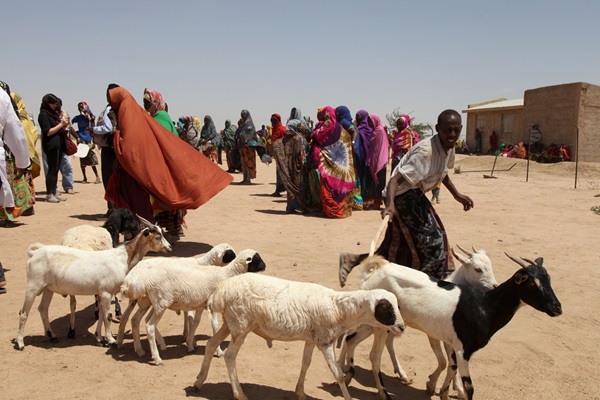
*As of May 22, 2023, the contribution from Norway has increased to $28.1 million. With this funding being channelled through SFERA, FAO aims to reach around 700 000 food insecure people.
Rome - The Food and Agriculture Organization of the United Nations (FAO) has welcomed a $23.7* million contribution from the Government of Norway to scale up its response to the most severe humanitarian crises and emergencies. The contribution represents the largest single unearmarked funding of its kind to date.
The funds will be channelled through FAO’s Special Fund for Emergency and Rehabilitation Activities (SFERA), which is a funding mechanism with streamlined procedures to receive flexible contributions from donors and allocate them where and when they are most needed.
With this funding, FAO aims to reach around 600 000 food insecure people with farming inputs, livestock supplies, fishing inputs and cash assistance where needed. The contribution will focus on countries and people most in need under Humanitarian Response Plans, while having a strategic reserve to respond quickly to sudden onset emergencies.
“We would like to thank the Government of Norway for this generous and timely contribution which will enable us to provide rapid and at scale assistance to those in greatest need,” said Rein Paulsen, Director of the FAO Office of Emergencies and Resilience. “Norway’s partnership with FAO has always focused on empowering rural families affected by hunger to protect and restore their own food production. It is of utmost importance to prioritize smallholder agriculture as a strategic frontline humanitarian response.”
Through the SFERA 2022 contribution, Norway was also among the first countries to assist the earthquake-affected families in Türkiye and the Syrian Arab Republic. Assistance is also being delivered in Burkina Faso, Democratic Republic of the Congo, Ethiopia, Honduras, Mali, Mozambique and the Niger.
Agriculture must be at the forefront of humanitarian response
Agriculture is the most empowering and cost-effective way to prevent and address hunger in humanitarian contexts.
For example, in Somalia, with a $200 cropping package, a farmer can produce enough sorghum to cover household cereal needs for a year, worth $960, in addition to nutritious legumes and vegetables to consume and sell.
In Haiti, it costs $5 to vaccinate a cow against fatal disease, protecting a key productive asset worth $1 000 that provides a family with up to one gallon of milk per day.
In Pakistan, with a $45 kitchen gardening kit, a family can produce 10 types of nutritious vegetables ready for consumption in 6 to 8 weeks, worth around $300 per season on the local market.
Under the 2023 humanitarian appeals, FAO requires $1.9 billion to assist 48 million people to restore local production and gain access to a steady supply of nutritious food, facilitate their recovery and lay the foundations for resilience to future shocks.